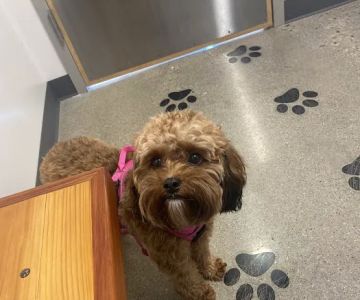Choosing the Right Pet Grooming Tools
As a pet owner, one of the most important responsibilities you have is ensuring your furry friend's hygiene and comfort. Grooming plays a significant role in maintaining your pet's overall health, and having the right grooming tools is essential for a successful and stress-free experience. Whether you're grooming your dog, cat, or any other pet, using the right tools can make a big difference in the effectiveness and ease of the process. Here, I'll walk you through the essential tools you need, how to choose them, and some tips for a smooth grooming session.
1. Understanding the Importance of Pet Grooming
Before diving into the specifics of pet grooming tools, it's important to understand why grooming is so crucial. Regular grooming helps to:
- Keep your pet’s coat clean and free from matting.
- Reduce shedding and prevent hairballs in cats.
- Promote good skin health and prevent skin conditions.
- Detect potential health issues like skin infections or parasites early on.
Grooming isn’t just about looks—it’s about keeping your pet healthy and comfortable. Additionally, grooming sessions are great bonding experiences for you and your pet!

980 E Northwest Hwy, Arlington Heights, IL 60004, USA
See Details2. Essential Pet Grooming Tools for Dogs and Cats
When it comes to grooming, the tools you use will depend on your pet’s breed, coat type, and grooming needs. Below are some of the must-have tools to consider:
2.1 Brushes
Brushes are a staple in any pet grooming kit, but the type of brush you need will vary depending on your pet’s coat. Here’s a quick guide:
- Short-haired pets: A slicker brush or a bristle brush is ideal for short-haired breeds like Beagles or Shorthair Cats. These brushes remove loose hair and dirt effectively.
- Long-haired pets: For long-haired breeds such as Golden Retrievers or Persians, a pin brush or wide-toothed comb will help detangle their hair and prevent mats.
- Double-coated breeds: Dogs like Huskies and Samoyeds benefit from an undercoat rake that helps remove the dense undercoat without damaging the outer coat.
2.2 Nail Clippers
Regular nail trimming is crucial to prevent your pet’s nails from growing too long, which can lead to pain and discomfort. For small pets, you can use a simple scissor-type nail clipper. Larger pets may require a guillotine-style clipper for better control. Remember to trim just the tip of the nail to avoid cutting into the quick.
2.3 Grooming Wipes
If you're short on time or need a quick touch-up, grooming wipes are a fantastic tool. They help clean your pet’s paws, face, and fur in between full grooming sessions. Wipes with ingredients like aloe and vitamin E are ideal for soothing your pet’s skin.
2.4 Shampoo and Conditioners
Choosing the right shampoo and conditioner for your pet is just as important as the grooming tools themselves. Look for gentle formulas that are free of harsh chemicals, especially if your pet has sensitive skin. Oatmeal-based shampoos are perfect for calming itchy skin, while moisturizing formulas help maintain a soft and shiny coat.
2.5 Clippers and Trimmers
If your pet has a thick coat or requires a specific cut (think poodles or schnauzers), a high-quality clipper or trimmer is essential. Clippers are great for all-over body grooming, while trimmers can help you fine-tune areas like your pet’s paws or ears.
3. How to Choose the Best Grooming Tools for Your Pet
When selecting grooming tools, it’s essential to consider your pet’s specific needs. Here are some factors to keep in mind:
- Coat type: As mentioned earlier, different coats require different tools. A short-haired dog will have different grooming requirements than a long-haired one.
- Pet size: The size of your pet matters. A large dog will need larger tools, whereas smaller pets may require more delicate tools.
- Sensitivity: If your pet has sensitive skin or is prone to irritation, choose hypoallergenic grooming products and softer brushes.
- Ease of use: Make sure you’re comfortable using the tools. Ergonomic handles, for example, can make brushing or trimming much easier and less tiring for you.
4. Tips for a Smooth Grooming Experience
Once you have your tools ready, here are some tips to ensure a smooth grooming session:
- Start slow: If your pet is new to grooming, start with short sessions and gradually build up the time.
- Use positive reinforcement: Reward your pet with treats and praise after each successful grooming session to help them associate grooming with something positive.
- Keep it calm: Create a calm, quiet environment and use gentle strokes to keep your pet relaxed.
- Regular grooming: The more often you groom your pet, the more comfortable they will become with the process.
By choosing the right pet grooming tools and following these helpful tips, you can ensure your pet looks and feels great after each grooming session!
If you're looking for the best pet grooming tools, head over to Hidden Brook Veterinary, where you'll find the most reliable and effective products for all your grooming needs.










